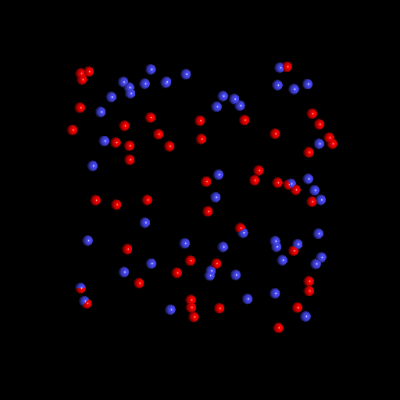Max-Born-Institute researchers have followed electrons in real-time to study the rapid onset of electrical resistance in semiconductors.
 Electrons (blue balls) and holes (red balls) show random thermal motion before the terahertz pulse hits the sample. Copyright: MBI
Electrons (blue balls) and holes (red balls) show random thermal motion before the terahertz pulse hits the sample. Copyright: MBI
Within solid materials, electrons can fly from the negative terminal to the positive one, without getting affected by other charges or atoms. But this does not happen in real time as the electrons interact with impurities and vibrating atoms.
Electrons move at a very slow speed of 1m per hour, and collisions happen within a very short period of 100 fs. These collisions occur at a finite time, and it is possible that theses electrons are able to travel for a certain time without bumping, when using a battery.
Max-Born-Institute scientists used very short bursts of light having 1 trillion oscillations per second (terahertz light) for accelerating optically generated free electrons in the gallium arsenide material. They used light as it also has an electric field like batteries. The electrons that are accelerated cause another electric field. When these are measured they indicate what action they are performing. When the battery was initially switched on, the electrons flew undisturbed for about 300 fs, after which their velocity decreased due to collisions.
The scientists discovered that “holes,” which are positively charged particles, were the main collision partners. Atomic vibrations were not the main partners. A hole has a mass 6 times more than an electron. It is a missing electron in a semiconductor’s valence band. When the semiconductor is optically excited it generates holes and free electrons. The terahertz bursts both the electrons and the holes and they move in opposite directions. The holes move slowly due to their large mass and also slow down the movement of electrons.
The discovery of this electric friction phenomenon will aid in the design of faster and efficient electronics, and also find ways to reduce electrical resistance.